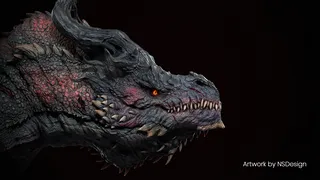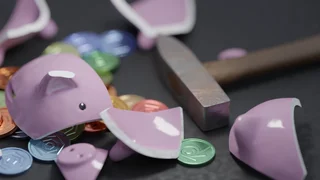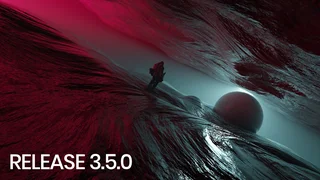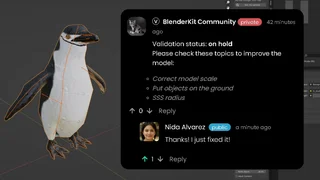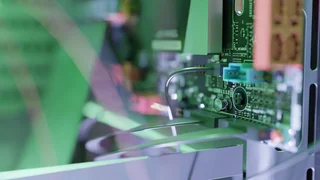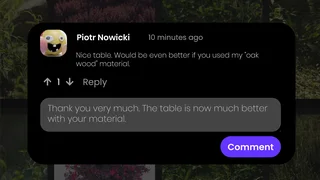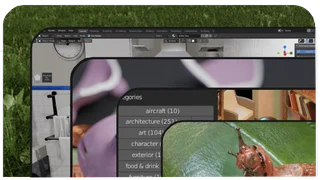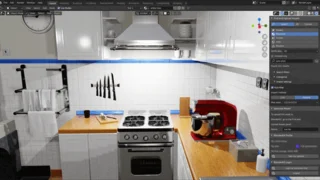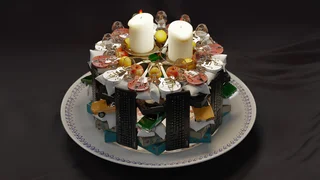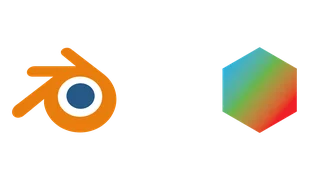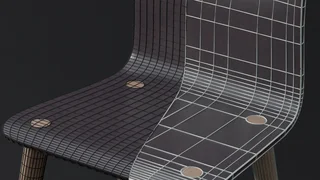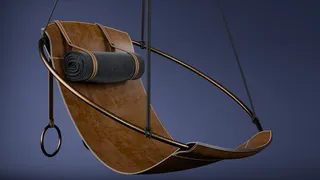
Yordan Zarev is a 3D generalist and the creator of many outstanding models. In the interview, he discusses his career and offers meaningful advice for emerging artists. Don't forget to check out Yordan's portofilio on BlenderKit as well as his Youtube channel full of useful tips regarding 3D.
Yordan's Youtube channelHi Yordan, would you please tell us a bit about yourself?
I’m a 3D generalist with almost a decade of experience in the industry. I’m born and raised in Bulgaria and this is where I'm currently situated.
At the moment, I work for a studio where we mostly do commercials, tutorials and webinars on the topic of CGI. I've worked on quite a lot of interior and exterior renders, product visualizations, some sci-fi projects as well as some VFX.
What led you to 3D modeling?
I studied architecture and making renderings for my projects got me into 3D. I started to look for a role in that field. In one of the studios I worked at they used Blender. Back then there were no good model libraries, so we had to model every piece of furniture, and had to do it fast! I remember having just a few hours to build quite complex furniture and shade it. That was my trial by fire and how I developed my skill set.
What helped you to learn how to model?
Well, learning 3D modeling is rather straightforward. There are very few shortcuts you can take and all of them are listed in the modifiers section :D
It was helpful to look at the topology of good quality models and examine how the polygons flow in specific areas like wrinkles, holes, extrusions, etc. I also remember spending quite a lot of hours watching Artem Gogolov and Arrimus3D youtube channels. I still go back to these videos from time to time when I want to optimize my workflow. Just as importantly was to ask experienced artists for guidance.
What do you like about 3D modeling?
I like the whole process. I really enjoy making things. Asset creation can be very relaxing and fulfilling, almost like meditation.
What are some of your main influences?
There have been two major influences in my art career. Maybe three. I actually remember the exact moments and art pieces that shifted my way of thinking.
The first one was a project by Bertrand Benoit, which was a rendition of the famous Nakagin tower in Tokyo. It completely blew me away and actually inspired me to start working in 3D. This was the first time I realized how much can be achieved with a computer, other than playing games :D
The second pivotal moment was a contest held by Chaos, back then Chaos Group, for their 10th anniversary of V-Ray. At that point, I was still a beginner with an incredibly unrealistic understanding of how much I still need to learn. I would put the blame for “bad projects” on working with a not so good computer. This changed when I saw the image of the challenge winner Zdravko Pavlov. It was stunning, amazing. I had a hard time comprehending that a single person did it in a few weeks. He then shared his whole process, explaining how he did everything and what computer he used. That was probably the biggest reality check I’ve ever had.
The third person was a co-worker from my first serious studio job named Nikolay, who basically taught me how to work in Blender and how to model quickly and accurately. After that I’ve met quite a lot of inspiring people but no one had such a huge impact on me as these three.
How would you describe your design style?
I can’t say that I have a design style. I never thought of myself as a particularly creative person, but a much more technical one. Oftentimes, I struggle when I have to develop a design and I find myself drowning in the process of figuring out all the small details. But I guess this comes with experience too.
Most of the projects I’ve worked on were a collaboration with a designer or a concept artist, so I have learned to be much better at bringing already existing ideas to life and building on top of them or refining them, rather than making something from scratch. Although one of my goals is to change that and work more on personal projects.
Your models tend to be photorealistic. What aids to achieve such quality?
I’ve always strived for photorealism and even though I’ve dipped my toes in a few cartoonish projects, they couldn’t really keep my interest.
Regarding my workflow, I had a long phase where I used to create super complicated shaders, trying to get everything to be exactly as it is in the real world only to later come to the realization that keeping things simple works so much better. The things that make an image really good and believable you will rarely find in the details, but rather in basic principles of lighting, composition and color theory.
How do you choose what to model?
I basically model whatever is needed for the project I’m working on. If I can’t find something on the internet at first glance, I simply model it. I don’t know how many times in the past I’ve wasted an hour or two trying to find, buy and adapt for my scene something that would be faster to model myself. So nowadays, I just model anything missing from the libraries I’m using.
Why do you use the BlenderKit library?
Quite simple - I really like the concept of BlenderKit. Having a well made models library for your projects is a must in my opinion. Also, it is so amazingly easy to use. Literally, no other platform for sharing models has made the process that simple and straightforward. I don’t even have to leave Blender to share something, I can just do it on the go as I work and I find this irreplaceable. Time seems to be my most valued asset and anything that saves me a few minutes here and there is a no - brainer
Do you have any projects planned for the future?
Quite a few. A lot of people around me have mentioned I have a knack for teaching and explaining, so lately I’ve been trying to put together a short course for beginner 3D artists on my youtube channel.
I’m also trying to get more into procedural workflows and video editing/compositing, even though the process is quite slow, at least for me. Finding sufficient time to study and practice has been a real challenge in the past few years.
Additionally, I have some personal projects that are aching to be finished, so I’m looking forward to my next vacation to work on them.
Do you have any recommendations for starting 3D artists?
What I want to say doesn’t apply to people who view 3D as a hobby and are doing it for pleasure - by all means, approach it however it feels the most fun for you. For people who actually want to work in the industry, my advice would be to put more effort into learning fundamentals. New artists sometimes rely too much on pre-made models, modeling plugins, generators, AI, etc. They build their portfolios with good visuals, but lack the actual skill to build their projects from scratch, and this is required in studios or if you want to stand out. Once you have a solid grasp on modeling, UV’s, shading, lighting, rendering and post, then go ahead and look for all the shortcuts. Like I said, time is valuable.
Is there anything else you would like to share?
Thanks for staying till the end of this interview, and if you enjoyed it, check out my youtube channel for more CG talk.
If you would like to support Yordan's work (but also work of other great 3D artists) please consider buying our Full plan subscription.

















